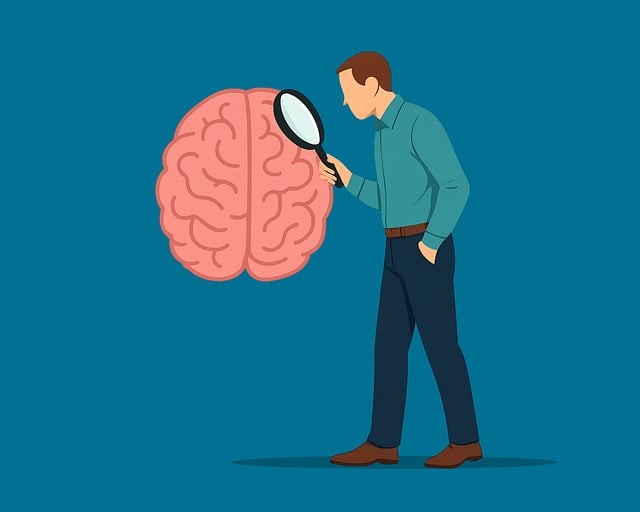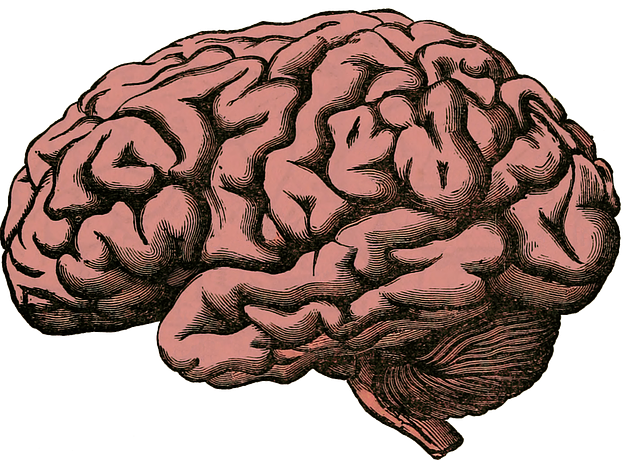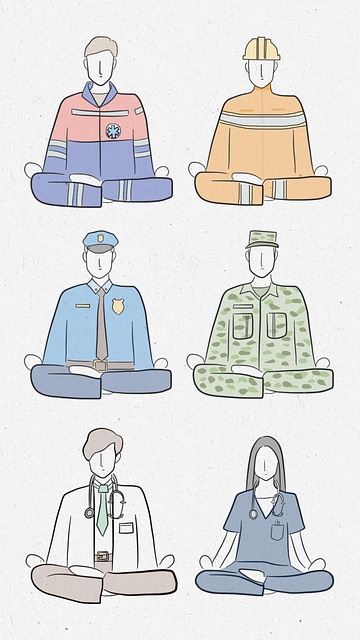Louisville Anxiety Therapy: Effective Stress Reduction Techniques for Daily Life
Louisville Anxiety Therapy provides a holistic approach to managing stress and anxiety through thera…….
In the quest for mental well-being, Louisville Anxiety Therapy (LAT) has emerged as a comprehensive approach, offering hope and healing to individuals struggling with anxiety disorders. This therapeutic method, named after its birthplace in Louisville, Kentucky, USA, has garnered significant attention for its effectiveness and unique methodology. This article aims to provide an extensive exploration of LAT, delving into its core principles, global reach, economic impact, technological innovations, regulatory frameworks, challenges, and the transformative power it holds for those seeking relief from anxiety’s grasp. By the end, readers will gain a profound understanding of this therapeutic modality and its potential to revolutionize mental health care.
Definition: Louisville Anxiety Therapy is an evidence-based therapeutic framework designed specifically to address various anxiety disorders, including generalized anxiety disorder (GAD), panic attacks, social anxiety, and phobias. It employs a multi-faceted approach combining cognitive-behavioral therapy (CBT), mindfulness practices, exposure therapy, and personalized support to help individuals manage and overcome their anxiety.
Core Components:
Cognitive Restructuring: LAT therapists guide clients to identify and challenge negative thought patterns associated with anxiety, replacing them with more realistic and positive ones.
Mindfulness Techniques: Incorporating mindfulness meditation helps individuals stay grounded in the present moment, reducing the impact of anxious thoughts and feelings.
Exposure Therapy: Gradually exposing clients to feared situations or objects in a safe environment allows them to confront their anxieties and learn coping strategies.
Personalized Support: LAT tailors treatment plans to individual needs, ensuring that the approach is as unique as the person receiving therapy. This includes regular check-ins and progress assessments.
Historical Context: The roots of LAT can be traced back to the cognitive behavioral therapy (CBT) movement of the 1960s and 70s. However, it evolved into a distinct therapeutic approach in the early 2000s when a group of dedicated therapists in Louisville began collaborating to develop a more comprehensive solution for anxiety treatment. Their collective experience and innovative techniques laid the foundation for what is now known as LAT.
Significance: Anxiety disorders are among the most prevalent mental health challenges globally, affecting millions of people across all demographics. Traditional therapies often fall short in providing long-lasting relief, leading to high rates of recurrence. LAT addresses this gap by offering a structured yet adaptable framework that empowers individuals to take control of their anxiety and regain their lives.
Louisville Anxiety Therapy has transcended geographical boundaries, finding resonance worldwide. Its success can be attributed to its adaptability and cultural sensitivity, making it appealing to diverse populations.
International Adoption: LAT has been adopted in numerous countries, including the UK, Canada, Australia, and several European nations. It is particularly popular in regions with robust mental health systems, such as Northern Europe, where access to therapy is generally more accessible.
Trends Shaping LAT:
Integrating Technology: The rise of telemedicine and digital therapy platforms has expanded LAT’s reach, allowing individuals in remote areas to access specialized care. Mobile apps offering mindfulness exercises and virtual exposure therapy sessions are gaining popularity.
Cultural Sensitivity: As LAT spreads globally, therapists are increasingly incorporating cultural elements into treatment to ensure effectiveness across diverse populations. This includes adapting techniques and language to respect and reflect different cultural backgrounds.
Community Outreach: There is a growing emphasis on community-based programs to increase awareness about anxiety disorders and reduce the stigma associated with seeking therapy. LAT is being integrated into schools, workplaces, and community centers to provide early intervention and support.
The economic impact of Louisville Anxiety Therapy is significant, both as a service and as an employer in the mental health sector.
Market Dynamics: The global mental health market is experiencing rapid growth, driven by increasing awareness, rising healthcare expenditure, and growing acceptance of therapy as a valid treatment for mental disorders. LAT, with its specialized approach, contributes to this expansion, particularly in regions where access to specialized anxiety care was previously limited.
Investment Patterns: Private equity firms and venture capitalists have shown a growing interest in mental health startups, including companies offering digital LAT solutions. This influx of investment fuels innovation and improves accessibility to high-quality therapy.
Economic Impact on Individuals: For those seeking LAT, the cost can vary widely depending on location, provider, and treatment duration. While some insurance plans cover anxiety therapy, out-of-pocket expenses can be a barrier for many. However, the long-term economic benefits of reduced absenteeism, improved productivity, and decreased reliance on medication are substantial.
Technology has played a pivotal role in transforming LAT into a more accessible and effective therapeutic option.
Digital Therapy Platforms: Online therapy platforms offer LAT services through video conferencing, allowing individuals in remote areas to access specialized care. These platforms often include features like chat, messaging, and digital workbooks for homework assignments.
Mobile Apps: Dedicated apps provide users with personalized mindfulness exercises, guided meditations, and virtual exposure scenarios. Some apps even offer AI-driven therapy sessions, making LAT more accessible and convenient.
Virtual Reality (VR) Therapy: VR technology is being explored to create immersive exposure therapy experiences, enabling clients to confront their fears in safe, simulated environments. This innovative approach shows promise for treating phobias and social anxiety.
Data Analytics: Technological advancements enable therapists to track client progress, measure the effectiveness of treatments, and personalize therapy plans further. Data analytics can identify patterns and trends, leading to more efficient and tailored LAT practices.
The regulatory landscape surrounding LAT varies across jurisdictions but plays a crucial role in ensuring its quality and ethical delivery.
Key Policies:
Licensing and Certification: Mental health professionals providing LAT must obtain licenses and certifications specific to their region. These ensure that therapists have the necessary training and expertise.
Ethical Guidelines: Professional bodies set ethical standards for LAT practitioners, covering issues like informed consent, confidentiality, and boundaries.
Insurance Coverage: Policies regarding insurance reimbursement for therapy vary by country and region, influencing accessibility. Many countries are working towards expanding mental health coverage to include specialized therapies like LAT.
Regulatory Challenges: Ensuring consistent quality of care across different providers and regions is a significant challenge. Standardizing training programs and continuing education requirements can help address this issue. Additionally, navigating the rapid pace of technological advancements while maintaining regulatory oversight is an ongoing task for policy makers.
Despite its successes, LAT faces several challenges and criticisms that require thoughtful consideration and strategic solutions.
Main Challenges:
Accessibility: While technology has improved access, LAT still faces barriers in reaching underserved populations, including rural areas and low-income communities.
Stigma: Despite growing acceptance, anxiety disorders often come with stigma, which can deter individuals from seeking therapy. LAT practitioners must continue to educate the public and dispel myths surrounding therapy.
Training and Expertise: Ensuring that all therapists providing LAT are adequately trained and certified is essential. Continuous education and supervision should be mandatory to maintain high standards.
Criticisms and Solutions:
Cost: The financial burden of therapy can be a significant barrier. Subsidies, insurance coverage expansions, and innovative financing models could help make LAT more accessible.
Cultural Competence: Critics argue that LAT may not always account for cultural differences effectively. Address this by integrating culturally sensitive practices and providing diverse therapist teams can improve outcomes for minority populations.
Individualized Care: While LAT is adaptable, critics suggest it might not cater to everyone’s unique needs. Implementing a more personalized approach, allowing for flexibility within the core framework, can enhance its effectiveness.
The following case studies illustrate the transformative power of Louisville Anxiety Therapy in diverse real-life scenarios.
Case Study 1: Overcoming Social Anxiety
Sarah, a 28-year-old marketing professional, struggled with severe social anxiety that hindered her career and personal life. After trying various self-help strategies without success, she sought LAT therapy. Through cognitive restructuring techniques, Sarah learned to challenge negative thoughts during social interactions. Mindfulness practices helped her stay present and reduce anxiety. Gradually, she faced her fears, attending networking events and joining a local book club. Within six months, Sarah’s confidence soared, leading to promotions at work and new friendships.
Lessons Learned: LAT’s structured approach and personalized support enabled Sarah to develop coping strategies tailored to her needs. The gradual exposure component was crucial in building her resilience over time.
Case Study 2: Managing Generalized Anxiety Disorder (GAD)
John, a 45-year-old college professor, was diagnosed with GAD, which made it challenging for him to concentrate and sleep. He joined a group therapy session focused on LAT. The group setting provided a safe space for John to share his experiences and learn from others facing similar struggles. Exposure therapy helped him confront worries about work and health, replacing them with more realistic concerns. Over time, John noticed significant improvements in his ability to manage anxiety and his overall well-being.
Key Takeaways: Group LAT sessions offer a supportive environment, fostering social connection and shared understanding. Combining exposure therapy with cognitive restructuring empowers individuals to face their fears and replace anxious thoughts with realistic ones.
Case Study 3: Treating Phobias
Emily, a 22-year-old university student, had an intense fear of heights that restricted her from traveling or even standing on stairs. She underwent LAT treatment, focusing on exposure therapy. Under the guidance of her therapist, Emily started by looking at pictures of tall buildings and gradually moved to sitting on a ladder. Each step was carefully managed, and she was rewarded for her courage. After several sessions, Emily felt empowered enough to travel abroad and even enjoyed hiking for the first time.
Insights: Exposure therapy, when tailored to individual comfort levels, can be highly effective in treating specific phobias. The supportive relationship between therapist and client is vital to ensuring a positive outcome.
The future of Louisville Anxiety Therapy looks promising, with several growth areas and emerging trends shaping its horizon.
Potential Growth Areas:
Telehealth Expansion: The COVID-19 pandemic accelerated the adoption of telehealth, and LAT is poised to benefit further from this trend. Virtual therapy sessions will continue to grow in popularity, especially in rural or underserved regions.
Integration with Digital Health: LAT will increasingly incorporate digital tools and platforms, enhancing accessibility and personalization. AI-driven therapy assistants and mobile apps will play a more significant role in delivering tailored interventions.
Cultural Diversity Training: As LAT spreads globally, ensuring cultural sensitivity and competency among therapists will be crucial. Diverse therapist teams and culturally adapted treatment approaches will become the norm.
Emerging Trends:
Neurotechnology: Advancements in brain-computer interfaces (BCIs) and neurofeedback may offer new avenues for exposure therapy, providing more direct interventions for anxiety disorders.
Mindfulness in Schools: There is a growing emphasis on integrating mindfulness practices into educational settings to support students’ mental health and reduce anxiety levels. LAT can play a pivotal role in training teachers and developing age-appropriate programs.
Preventive Measures: Future research may focus on identifying early risk factors for anxiety disorders, leading to more proactive interventions and preventive strategies.
Strategic Considerations:
Research and Collaboration: Continued investment in research is vital to refining LAT techniques and expanding our understanding of anxiety disorders. Collaboration between therapists, researchers, and technology developers will drive innovation.
Policy Advocacy: Mental health advocates must work with policymakers to ensure that LAT and other evidence-based therapies are accessible, insured, and regulated effectively.
Diversity and Inclusion: Efforts should be made to attract and train a diverse therapist workforce to better serve diverse client populations and address cultural barriers to care.
Louisville Anxiety Therapy represents a significant milestone in the pursuit of mental well-being, offering a comprehensive and effective approach to managing anxiety disorders. Its global impact, technological advancements, and ongoing research underscore its importance in modern mental health care. As we navigate the future, LAT is poised to play an even more central role, guiding individuals towards calmer, more fulfilling lives.
Q: What types of anxiety disorders does LAT treat?
A: Louisville Anxiety Therapy is designed to address a wide range of anxiety disorders, including generalized anxiety disorder (GAD), panic attacks, social anxiety, specific phobias, and obsessive-compulsive disorder (OCD).
Q: Is LAT right for everyone?
A: While LAT has proven effective for many, it may not be suitable for everyone. Individuals with severe psychotic disorders or those requiring urgent psychiatric care should seek alternative treatments under professional guidance.
Q: How long does therapy typically last?
A: Therapy duration varies depending on the severity of symptoms and individual progress. Some individuals may experience significant improvements in a few months, while others might require up to a year or more for sustained relief.
Q: Can LAT be combined with medication?
A: Yes, LAT can often be integrated with medication as part of a comprehensive treatment plan. It’s essential to consult with a healthcare professional to determine the most effective approach for each individual.
Q: Is LAT covered by insurance?
A: Insurance coverage varies by region and provider. Many policies cover mental health services, but specific LAT treatments might be excluded or require pre-authorization. Checking with your insurer is recommended.

Louisville Anxiety Therapy provides a holistic approach to managing stress and anxiety through thera…….

Louisville Anxiety Therapy leverages the RFM (Risk, Resilience, Mental Health) framework to build re…….

Social Skills Training (SST) is an effective strategy for Louisville anxiety therapy, focusing on re…….

Louisville Anxiety Therapy offers a holistic, personalized approach to mood regulation and anxiety m…….